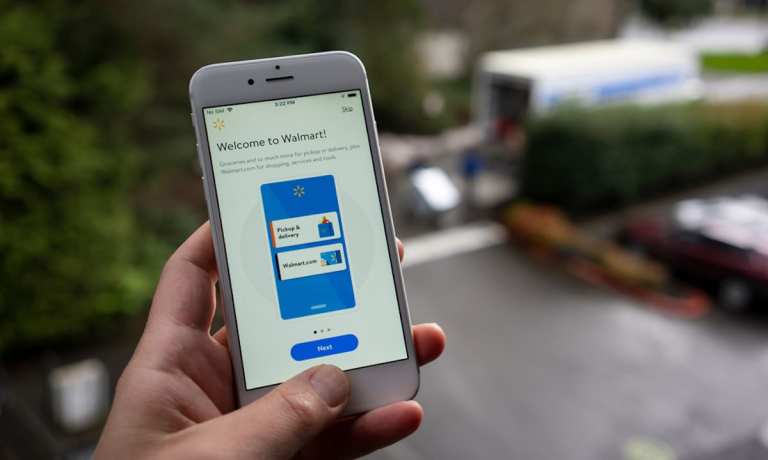This strategy marked the voice of a new Walmart, executives of the 60-year-old company told investors — the dawning of a bolder, brasher, more confident iteration of its former self that would be almost unrecognizable even to those who know it best.
“Walmart is different than it was three or five years ago,” Walmart CFO Brett Biggs told investors three months ago. “It’s faster, it’s more creative, it’s less risk-averse. Now is the time to play even more aggressive offense — we’re winning and we intend to keep pushing the ball aggressively down the field.”
Fast forward to the present, and proponents and critics alike will be looking to see how that battle plan, which is backed by a record $14 billion bankroll, is playing out as Walmart reports its results — not only for the first three months of the new year, but for the first 90 days of this new omnichannel era.
Beyond the Top and Bottom Line
While “the Wall Street crowd” will be looking to see whether Walmart can beat average expectations of $1.21 per share on $132 billion in sales (which, for the record, is just a few pennies above the $1.18 per share it delivered in the year-ago quarter and actually down $700 million or 0.5 percent on the sales front). If the analysts are right, then Tuesday (May 18) will not be the kind of transformative result that the “retail crowd” is hungry to see.
Advertisement: Scroll to Continue
When CEO Doug McMillon commented in February that the capabilities the company had built in previous years had “put us ahead, and we’re going to stay ahead,” one might think that the release of Q1 performance results should more closely resemble “a gender reveal” rather than further perpetuation of the flattish trajectory that has allowed rival upstart Amazon to catch Walmart — and pass it — in several key categories over the past 10 years.
Although Walmart has pledged to improve and increase its digital sales — and has invested heavily in the launch of its eight-month-old Walmart+ free delivery annual membership program — the fact remains that $9 out of every $10 it generates is still being done through its massive footprint of physical stores.
Depending on your viewpoint, Walmart’s legacy brick-and-mortar dependency can either be seen as a problem OR as a low-hanging-fruit opportunity to move the needle on its comparatively small eCommerce business.
The fact that Amazon and almost every other major eCommerce player has already said that the meteoric online sales growth rates of yore (e.g., the past 14 months) are not going to be repeated in post-pandemic 2021 has also set up an interesting dynamic. Given that Walmart is uniquely leveraged to the success of both “bricks and clicks,” so to speak, its ability to seamlessly and simultaneously attract customers to its physical stores and digital properties is critical.
The Digital Transformation
To be sure, the digital side — aka Walmart.com — is on the move, with U.S. eCommerce sales rising 79 percent during the COVID-ravaged year that just ended, albeit off a small base. In addition, the retailer continues to invest in people, products and processes that will help grow sales and efficiency.
In fact, nary a week has gone by this year in which Walmart did not unveil some new initiative or undertaking that would further that goal, including last week’s acquisitions of the MeMD telehealth and Zeekit virtual fitting firms.
The king of the supercenter big-box store has also made no secret of its budding love of social media selling — especially on TikTok, where it has enjoyed some early success at tapping into an important new way to reach young consumers (while also looking kind of cool).
In March, Walmart signed a deal with A-list fashion designer Brandon Maxwell to revamp two of its private-label clothing lines — and to oversee seasonal style refreshes — in a pact the retailer called a “first-of-its-kind” move for the company.
Future FinTech
However, for all its twists and turns, nothing has drawn more curiosity — or fewer details — than Walmart’s plans to become its own banking platform and offer a suite of modern FinTech conveniences, in a bid to attract new customers and give existing shoppers more reasons and ways to spend.
Investors will be eager to hear any updates on the company’s bank plans after having just recruited two Goldman Sachs executives to oversee the project, which has largely been kept off the radar since the announcement of a pact with FinTech firm Ribbit Capital in January.
Nearly half a year later, with the hunt and need for new sources of revenue growth intensifying, any news of progress on the FinTech front would be welcomed — especially given the surge in COVID-era credit trends such as buy now, pay later, real-time payments, international money orders and same-day payroll.
Product Assortment
Walmart is not only working to make it easier to spend and send money, but also to increase the volume and variety of merchandise available on its website — including a larger assortment of new products from first-time vendors, as well as third-party merchants who pay commissions to sell through the Walmart.com platform.
To that point, Walmart is in the process of committing $350 billion in products made, grown or assembled in the U.S. as part of its plan to support the creation of more than 750,000 new jobs.
Prior to Tuesday’s progress report, shares of Walmart have fallen 3.5 percent over the past three months (compared to a 6 percent rise for the S&P 500), leaving the retailer with a market value of $390 billion.
The company will report its first-quarter results for its fiscal 2022 year on Tuesday morning (May 18) followed by a conference call for analysts and investors.




